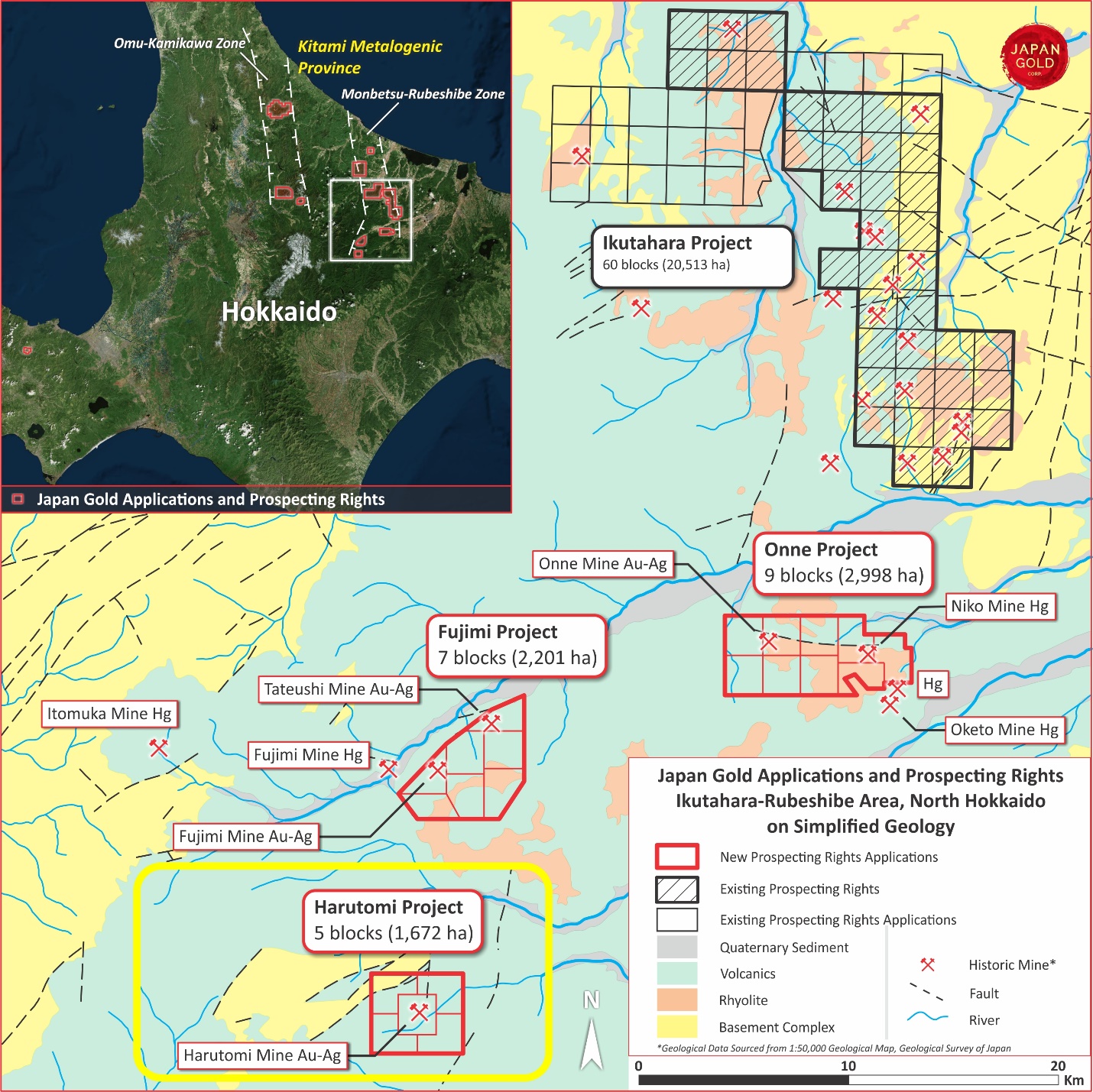- Centered around the historic Harutomi mine, the Harutomi mineralization was discovered in the late 1930’s, development and production were halted by the 1943 moratorium1.
- Small scale gold production was resumed between 1960 to 1970 with annual gold production not exceeding 2,400 tons per year with grades between 3.6 to 6.0 g/t Au and 92 to 252 g/t Ag
- A total of 10 veins were developed with strike lengths up to 500 m, the average recorded width of the Shikami No. 5 vein was 2.1 m with localized outcroppings up to 10 m wide1.
- A total of 7,810 m of underground workings were developed by the late 1960’s, however exploration was limited to the area of known veins. No exploration drilling has been completed to test deeper extensions and for veins not exposed at surface.
- A genetic relationship exists between epithermal gold mineralization and high-level mercury present in several mercury mines located immediately north of the project area, suggesting post-mineral erosion of the system is limited.
- No follow-up on anomalous resistivity targets identified by Sumitomo in the 1960’s.
- The historic underground development on veins in the licenses have yet to adequately test the potential for bonanza-grade gold-silver veins at depth.
- No systematic exploration drilling to test for lateral and vertical extensions on the known, historically mined veins has been completed.
- Japan Gold proposes to explore the potential link between mercury and epithermal gold mineralization.
- Japan Gold will seek to define the limits of the hydrothermal alteration cells around the historic Harutomi mine and use surface mapping and geochemistry to target new zones and extensions to previously exploited vein systems for testing by scout drilling.



